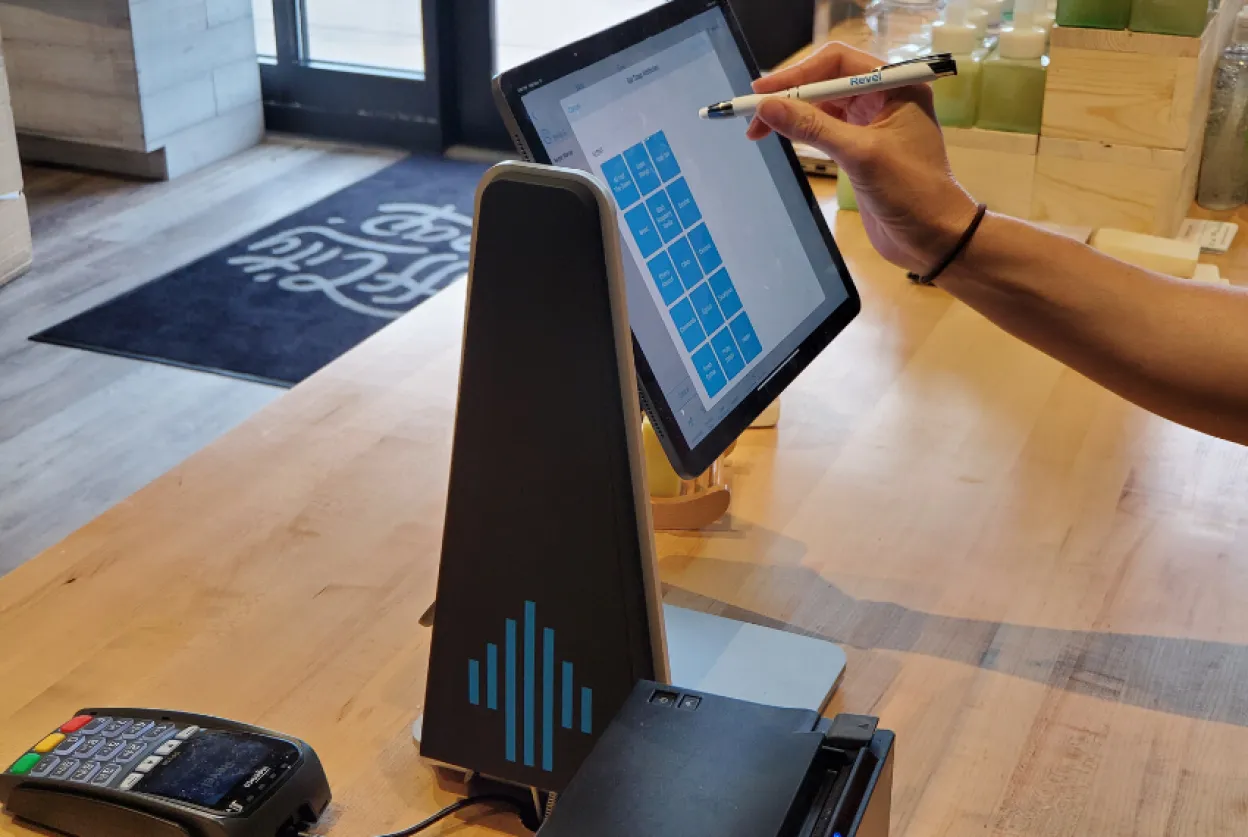All Eyes on Contactless Payments
Even before the sweeping effects of COVID-19, contactless payments comprised a heavy percentage of modern retail purchases. As once shuttered businesses begin to reopen and adapt to more germ-conscious customers, contactless payments have emerged as an essential solution to have in place.
Demand for contactless payments will continue to rise. Likewise, demand will increase for point of sale (POS) solutions that can easily incorporate contactless technology. We’ve gathered the facts around contactless solutions to help you consider if they’re right for your business.
How Do They Work?
Let’s start with the basics. Near-field communication (NFC) is a radio-frequency that uses a wireless radio antenna that allows the card to communicate with the POS. Through short-range communication between compatible devices (such as chipped cards and mobile phones), the POS can complete accurate and quick payments.
The technology behind tapping a card or using mobile payment options like Apple Pay and Google Pay is the same. If a business accepts a tap from a card, it is also set up to accept mobile payments as well.
Who is Using Contactless Payments?
For countries that have embraced chipped cards and mobile payments, swiping a card is a motion of the past. In late 2019, the use of contactless payments exceeded 90% in Australian markets. Usage rates sat at around 50% in UK and Canadian markets according to Forbes.
So far, limited merchant adoption and high insurance costs have resulted in timid adoption in the U.S. However, adoption is slowly rising as the barriers weaken and support increases from powerhouse processors like Visa. The country’s response to consumer demands in health and safety measures post COVID-19 may prove to be a strong accelerant for adoption as well. More card swipes and less cash means bigger transaction fee returns for card issuers.
In 2020, demand has already skyrocketed as restaurants are entertaining contact-free options across all components of their business, not just payments. Mastercard reports that contactless payments increased 40% this quarter alone, and some markets are generously increasing tap-and-go limits to support usage. Major retailers like Aldi are even including signage outside their doors to encourage contactless payments.
Flexibility is Key
Prior to COVID-19, 451’s consumer research stated that 60% of anti-adopters reported that they didn’t have a need for contactless payments, or simply had a preference for card swiping. Post-pandemic attitudes have likely shifted. A trend to watch will be how businesses decide to respond, whether shifting to contactless tech, or balancing this option with more traditional methods.
Regardless of where your business stands in a post COVID-19 world, we have all been tasked with evolving alongside consumers and adapting to their preferences. Contactless payments are just one of the ways businesses can provide a better, healthier experience to their customers.
The Future of Contactless Technology
We’ve explored the past and present of contactless payments. Now let’s explore what other contactless scenarios will become must-haves for businesses. Here’s a look at other contactless technology designed to accommodate evolving customer demands for health and safety standards.
SMS Integration
SMS, or short message service, is a text messaging service that allows mobile devices to exchange short messages. When integrated with a POS, your business can send and receive text messages, deploy automated notifications, and trigger alerts. For example, SMS notifications can be set up so the customer receives a text when an order is marked as “done” on the Kitchen Display System (KDS). This integration can allow customers to receive updates about their order status from their car, home, or socially-distanced location. This adds a layer of automated, contactless communication.
Contact-Free Delivery
Online ordering, delivery services, and curbside offerings are all different ways businesses are minimizing human contact in each transaction. Some integrated delivery management tools can give users an option to request contact-free delivery during their online ordering experience. Tools like these can help customers select their preferred method of delivery on the order and delivery notes providing them additional convenience.
Stick-on Labels to the Rescue
Stick-on labels allow merchants to print detailed order information on to-go boxes, takeout orders, and more. This eliminates guesswork as your staff completes a contactless order. A kitchen-safe option for stick-on label printing is Epson’s L90 Sticky Printer. This printer allows merchants to easily print labels on adhesive paper using a specially designed printer.
Is Your Business Ready to Go Contactless?
If you want to drive traffic and a positive shopping experience for your customers in a world where health and safety have taken an all-time precedence, design your store to be inclusive of multiple transaction types, especially contactless. As this trend continues to surge, now is a great time to explore setting up your business with contactless payment options.
With Revel’s expansive contactless features, you can provide your customers flexible, contact-free options alongside payments. Learn more about what an integrated POS can do for your business.
Original version of the blog post was published on Revel System’s Blog.










